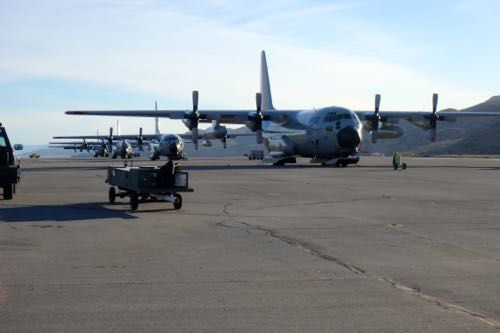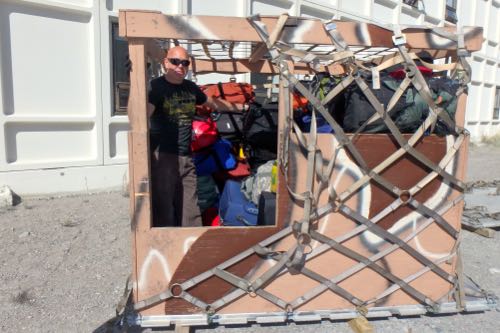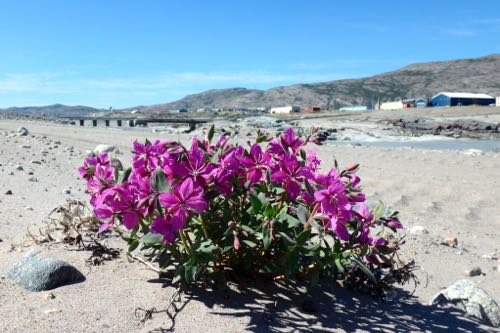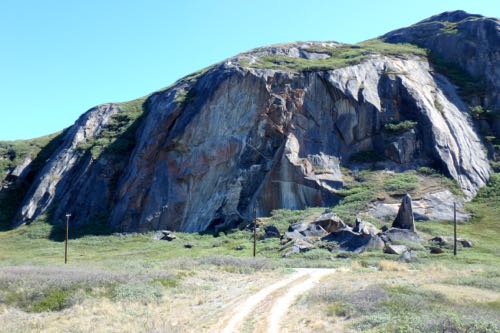
As you can see in the photo above, the Air National Guard brings several planes to Greenland when they come. They stay in country here for about a week or so. Then, all of the planes fly back to the United States. Tomorrow is the day that they should be flying back. There should be about 40-45 people, including me, flying back on some of these planes.
At 3:00 today, we had to turn in our bags so that they could be palletized and ready to load in the morning. We also had a check of our passports. This was to ensure that all of the paperwork is in order for the police check of our passports in the morning.

I spent much of today packing, walking around, and getting some work done on my computer. I will miss being here, but I am looking forward to seeing my family!

A Bit About the GeologyThe science that deals with the dynamics and physical history of the earth, the rocks of which it is composed, and the physical, chemical, and biological changes that the earth has undergone or is undergoing. of Greenland
Greenland is an amazing place in many different ways. One of these being the unique geology of the area. Not far from the town is a small mountain called Black Ridge. Looking across the river from the town, you can see the exposed face of this mountain. It is beautiful, but it also contains a very cool geologic feature.

When you look at the face of Black Ridge, you will notice many places that have vertical layers of rocks. These vertical layers are called dikes. A dike is when new rock is formed by magma or lava pushing into vertical cracks in existing rocks and creating new layers.
Much of Greenland was formed from an igneous rock (meaning that it formed from cooling magma/lava) called gneiss. As the land itself moved due to continental drift, cracks formed in the rocks. These cracks filled with new magma/lava, creating layers of basalt. As continental drift continued, the extreme heat and pressure caused much of the basalt to transform into a new type of rock called amphibolite.
The amphibolite was much more brittle than than surrounding gneiss, so it tended to crack as Greenland continued to move. Once again, magma/lava filled these cracks, this time forming dikes made of quartz and feldspar. The abundance of dikes around this area is called a dike swarm.

Video from My Expedition
Today's video highlights some of the women I met on my trip and their contribution to science. I strongly believe that science and engineering careers are the best (although not only) ones for students to pursue. There are not, however, enough girls going into science. I hope to show that science in the Arctic offers many great opportunities for girls. The video is here:


Comments